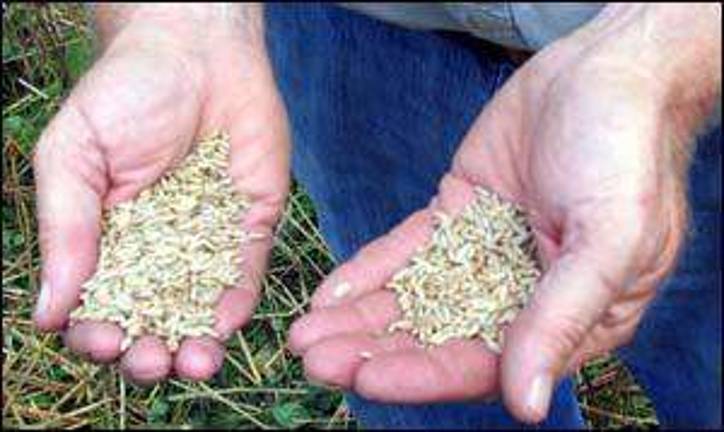Harvesting grain returns to Warwick

Rye will be used to create local whiskey Warwick In Colonial times, the Hudson Valley, including the Warwick area, was a breadbasket for the world. Chief among crops grown at that time for milling and export were wheat, corn, rye and oats. “We exported rye and wheat overseas,” said Town of Warwick Historian Dr. Richard Hull, “and now we’re coming full circle and it’s wonderful that we will be growing and milling grain in this area again. I’ve not seen grain harvested in our town since my early youth.” On Friday, Aug. 5, Al Buckbee, owner of Bellvale Farms, a dairy farm that has been in his family since 1819, welcomed Jesse Fredericks, who operates and rents out a combine harvester. They met on an eight-acre section of the Buckbee farm along Upper Wisner Road. With the right conditions including no rain forecast for that day and the crop’s moisture levels low, Fredericks would combine all the rye planted by Buckbee last Fall. Fredericks’ combine, which he rents out from his home on Unionville Road in Wantage, N.J., combines reaping, threshing and winnowing or separating grain from chaff into a single operation. Rye for whiskey After it is cleaned and placed into 50-pound bags at Cochocter Mills in Sullivan County, Buckbee will sell part or all of the grain to the Warwick Valley Winery & Distillery on Little York Road. Last year he had been thinking about raising grain on part of his fields when he met Jason Grizzanti, owner of the distillery, at an agricultural event. They discussed the advantages of diversification into other crops and Grizzanti suggested that he would be willing to purchase all of Buckbee’s grain for the production of his new rye whiskey. American rye whiskey, which is currently enjoying resurgence in popularity, must be distilled from at least 51 per cent rye. And a New York Class D farm distillery license, such as held by the Warwick Winery & Distillery, requires distillers to source at least 50 per cent of their ingredients from New York farms. “That requirement fits in fine with us,” said Grizzanti, “because we always try to use local ingredients for all our quality products.” Crop rotation In addition to rye, Buckbee also plants corn and oats and may plant wheat in the near future. Rotating these grain crops has other advantages such as adding valuable nutrients to the soil and preventing erosion. Another advantage, especially for dairy farms, is that the grassy by-product can be bundled up and used for animal bedding. “I hope the return of our valleys to grain production for local industries will be in our future,” said Hull. “We’ve come full circle. This is a wonderful and historic event.”